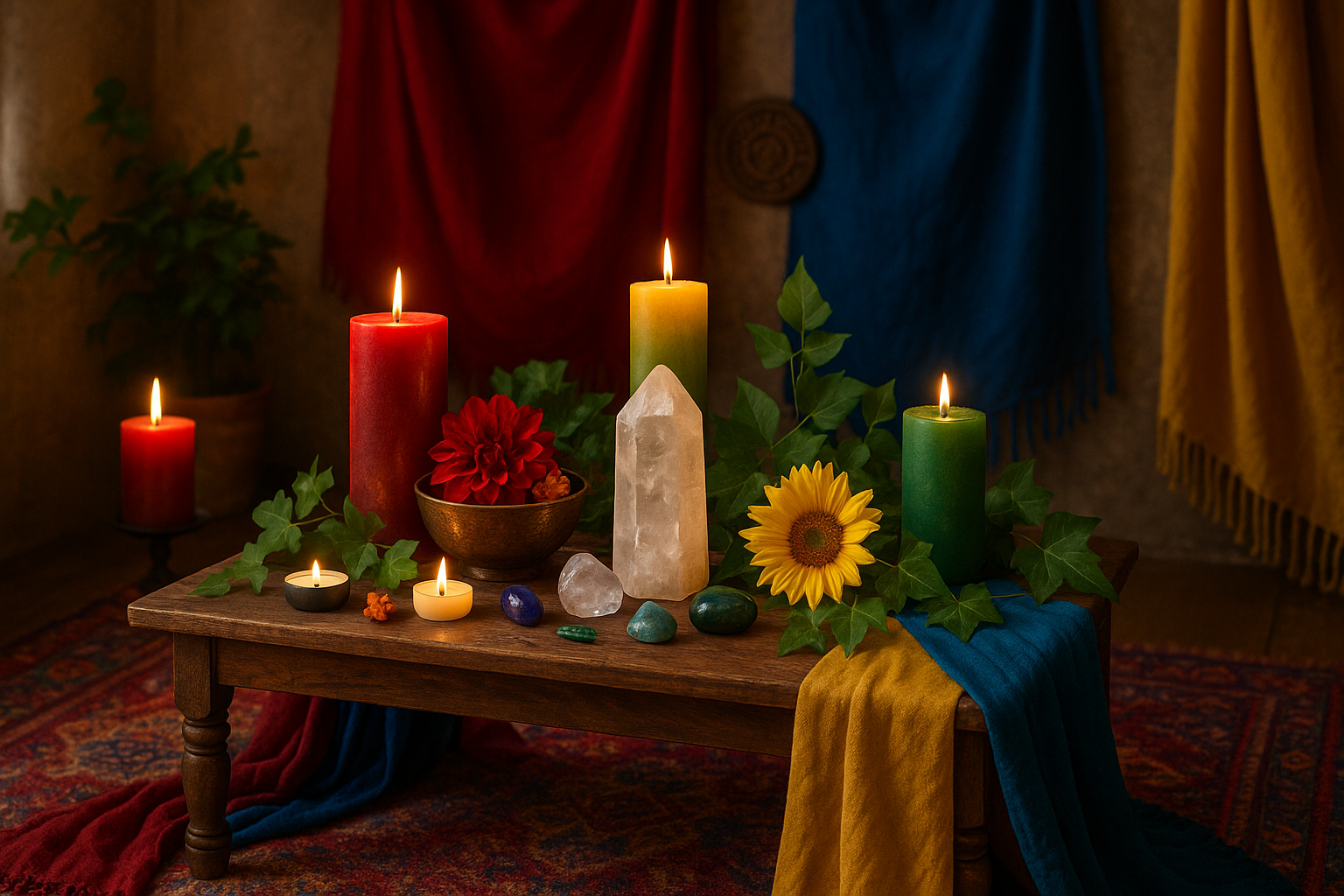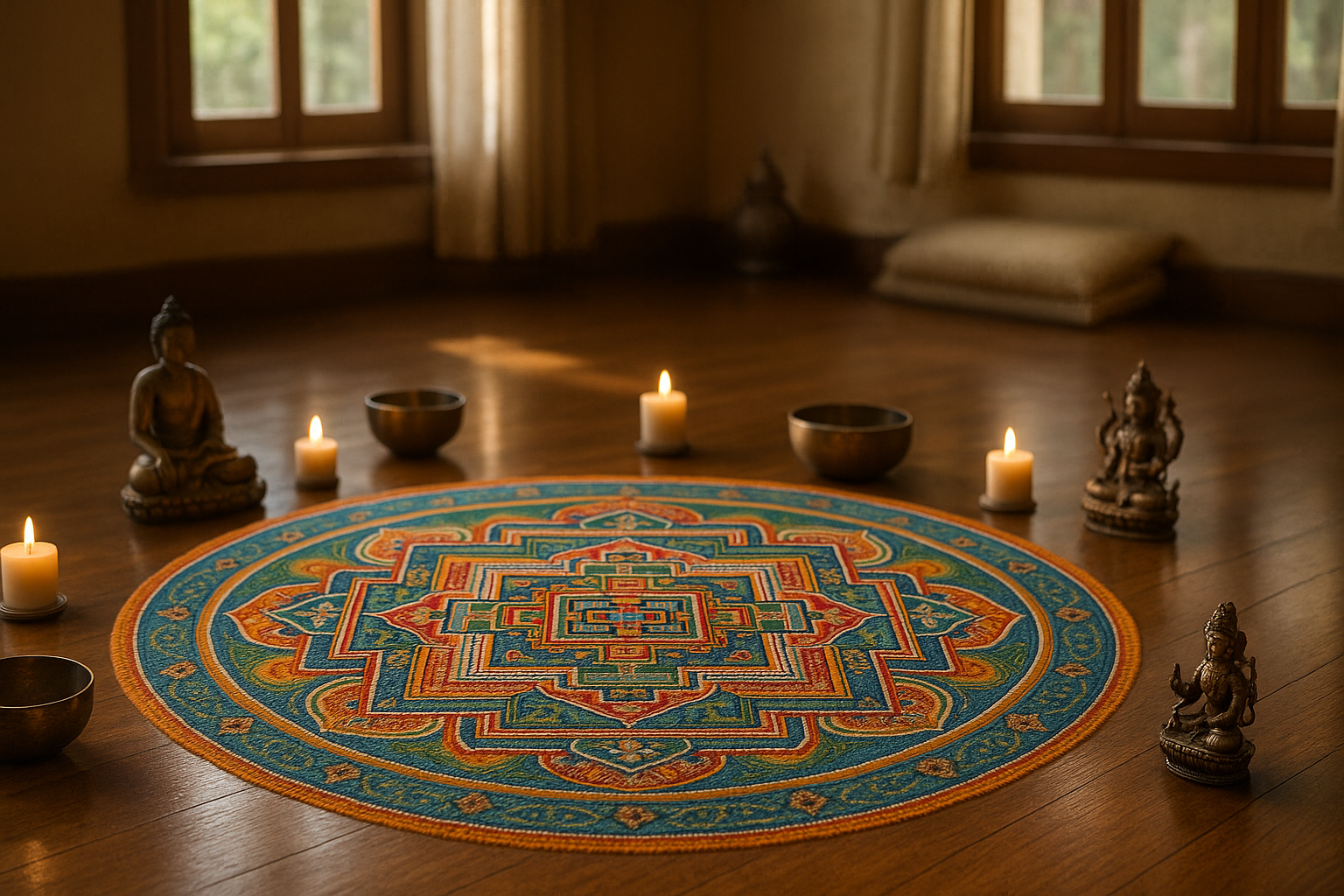In a world that’s perpetually on the move, where the demands of modern life often leave us feeling overwhelmed and disconnected, finding moments of tranquility can seem like an elusive dream. Yet, amidst the chaos, there exists a simple, natural remedy that has been employed for centuries to cultivate peace and balance: smooth stones. These unassuming gifts of nature, with their gentle curves and cool textures, offer more than just aesthetic appeal. They serve as tangible anchors, guiding us back to the serenity that lies within. Welcome to “Find Your Zen with Smooth Stones: The Ultimate Guide to Calming Practices” — a journey into the heart of mindfulness and relaxation.
Picture yourself standing on a secluded beach, the rhythmic sound of waves caressing the shore, the salty breeze gently tousling your hair. As you walk, your eyes are drawn to the myriad of stones scattered across the sand, each uniquely polished by the ebb and flow of the tides. Picking one up, you feel its cool, smooth surface rest against your palm. It’s a sensation that invites introspection and a momentary pause, a connection to something greater than oneself. In this guide, we delve into the transformative power of these stones, exploring how they can become essential tools in your quest for inner peace and mindfulness.
Our exploration begins with the ancient history of stone use in meditation and spiritual practices. From the Zen gardens of Japan to the cairns of the Celts, stones have long been revered as symbols of endurance and tranquility. By understanding these historical contexts, we can appreciate the depth of their significance and the enduring legacy that smooth stones hold in various cultures. This section will uncover the stories and traditions that have elevated simple stones to sacred status, inviting you to adopt these practices into your own life.
As we journey further, you’ll discover a variety of calming practices that incorporate smooth stones. These range from tactile meditations and breathwork to more elaborate rituals designed to cleanse and balance your energy. You’ll learn how to create your own “stone garden,” a personal sanctuary that serves as a daily reminder of the peace you seek. Each technique is crafted to guide you gently towards mindfulness, helping you to cultivate a state of zen that permeates every aspect of your life. 🧘♂️
Finally, we will explore the science behind why these practices work. In an age where stress-related ailments are on the rise, understanding the physiological and psychological benefits of mindful practices is more important than ever. By examining studies and expert insights, we’ll unravel how the simple act of holding a stone can lower stress levels, enhance concentration, and promote emotional well-being. This scientific perspective not only validates the experiences of countless individuals but also empowers you with knowledge to make informed decisions about your own health and wellness journey.
Embark on this path with us, as we unlock the secrets of finding your zen through the humble yet powerful smooth stone. Whether you’re a seasoned practitioner of mindfulness or a curious newcomer, this guide promises to enrich your life with practices that are both profound and accessible. So take a deep breath, let go of the chaos, and allow the wisdom of smooth stones to guide you to a place of inner calm and clarity. 🌿
Understanding the Concept of Zen and Its Relevance Today
The concept of Zen, rooted deeply in the traditions of Buddhism, has transcended its ancient origins to find a place in modern wellness practices. Zen, in essence, is a path to enlightenment achieved through meditation, self-contemplation, and intuition rather than through religious study. In today’s fast-paced world, the principles of Zen offer a refuge, a way to attain mental clarity and inner peace. By integrating these principles into our daily lives, we can learn to navigate stress and chaos with a calm and balanced mindset.
Zen teaches us the art of mindfulness and the importance of living in the present moment. This approach is particularly relevant in a world where distractions are ubiquitous and constant. Through practices such as zazen (seated meditation), kinhin (walking meditation), and mindful breathing, individuals can cultivate a deeper awareness of themselves and their surroundings. These practices encourage a focus on simplicity and direct experience, stripping away the layers of complexity that often cloud our judgment and hinder our happiness.
Moreover, the teachings of Zen emphasize the interconnectedness of all things, promoting a sense of harmony and balance with nature. This philosophy can be applied to our personal and professional lives, helping us to build more meaningful relationships and make more thoughtful decisions. As we embrace the Zen way of living, we can begin to appreciate the beauty of simplicity, find joy in the mundane, and foster a sense of gratitude for each moment.
The Healing Power of Smooth Stones: A Pathway to Tranquility
Incorporating smooth stones into your Zen practice can enhance your journey towards inner peace and tranquility. These stones, often referred to as Zen stones or meditation stones, are not merely decorative objects; they hold symbolic and practical significance in various calming practices. The act of selecting, holding, and contemplating a smooth stone can be a grounding experience, anchoring you in the present moment and promoting mindfulness.
One of the key aspects of using smooth stones is their tactile nature. The act of holding a stone in your hand can bring about a sense of calmness and focus. The smooth, cool surface of the stone serves as a focal point during meditation, helping to quiet the mind and center your thoughts. This practice can be particularly beneficial during moments of stress or anxiety, offering a tangible reminder to return to a state of balance and tranquility.
Moreover, smooth stones can also be used in various meditation techniques, such as stone balancing and stone arrangement. These practices involve stacking or arranging stones in a harmonious manner, reflecting the principles of balance and symmetry that are central to Zen philosophy. Engaging in these activities can cultivate patience, concentration, and a deeper connection with nature, ultimately enhancing your overall sense of well-being.
Table: Benefits of Using Smooth Stones in Meditation
| Benefit | Description |
|---|---|
| Grounding | Provides a tangible focus for the mind, promoting stability and presence. |
| Mindfulness | Encourages awareness of the present moment through tactile engagement. |
| Balance | Symbolizes harmony and equilibrium, essential elements of Zen philosophy. |
For a more in-depth understanding of how to incorporate smooth stones into your meditation practice, watch this insightful video: “Meditation with Zen Stones: A Step-by-Step Guide” by Mindful Living.
Practical Ways to Integrate Zen Practices into Daily Life
Integrating Zen practices into your daily routine doesn’t require a complete lifestyle overhaul. In fact, the simplicity of these practices makes them accessible and adaptable to any lifestyle. The key is consistency and intentionality. By dedicating even a few minutes each day to Zen practices, you can create a profound shift in your mindset and overall well-being.
One practical way to start is by incorporating mindful breathing exercises into your day. Take a few moments to focus on your breath, inhaling deeply through your nose and exhaling slowly through your mouth. This simple practice can be done anywhere and anytime, serving as a powerful tool to reset your mind and reduce stress. Over time, you may find that this practice becomes a natural response to challenging situations, helping you maintain composure and clarity.
Another effective practice is creating a Zen-inspired space in your home or workplace. This can be as simple as arranging a small corner with elements that promote relaxation and tranquility, such as a cushion for meditation, smooth stones, and calming scents like lavender or sandalwood. This space can serve as a sanctuary, a place where you can retreat for a few moments of peace amidst the chaos of daily life.
List: Simple Zen Practices for Daily Life
- Mindful Breathing: Take conscious breaths to center yourself throughout the day.
- Zen Space: Create a peaceful area with calming elements for relaxation.
- Walking Meditation: Practice mindfulness during your daily walks, focusing on each step.
- Gratitude Journaling: Reflect on things you are grateful for each day to foster positivity.
- Digital Detox: Set aside time each day to disconnect from screens and reconnect with the present moment.
By gradually incorporating these practices into your routine, you can cultivate a more mindful and balanced approach to life, reaping the benefits of Zen philosophy in your everyday experiences.

Conclusion
In conclusion, the journey to finding your zen with smooth stones is not just a practice, but a transformative experience that invites peace, balance, and serenity into your life. Throughout this article, we’ve explored the multifaceted benefits of incorporating smooth stones into your daily routine as a tool for mindfulness and relaxation. We began by examining the historical and cultural significance of stones in various traditions, demonstrating their long-standing role as symbols of stability and calm.
We delved into the science of why smooth stones are effective in promoting relaxation, emphasizing the tactile engagement they offer and their ability to anchor your thoughts in the present moment. This tangible connection fosters a grounding effect, which is essential in today’s fast-paced world where stress often overwhelms. Moreover, we highlighted several practical methods to integrate these stones into your everyday life, from simple meditation practices to intricate stone arrangements that can enhance your living space’s energy.
Another key aspect we covered was the customization of this practice to suit personal needs and preferences. Whether you are a beginner or a seasoned practitioner, the versatility of smooth stones allows for a tailored approach, encouraging creativity and personal growth. This adaptability ensures that everyone can find a practice that resonates with them, whether it’s through quiet reflection, artistic expression, or even as a part of a daily ritual.
The importance of setting intentions was also discussed, reinforcing the idea that mindfulness with smooth stones is not merely about the physical stones themselves, but the personal meanings and aspirations you attach to them. By imbuing these objects with significance, you create a deeper, more meaningful practice that aligns with your inner values and goals.
Furthermore, we explored the environmental and ethical considerations when selecting stones, advocating for sustainable and mindful sourcing practices. This awareness not only preserves natural resources but also enhances the ethical integrity of your practice, creating a deeper connection to the earth and its energies.
As you reflect on the information and insights shared, it’s crucial to recognize the broader implications of adopting such calming practices in your life. In a world often filled with noise and chaos, finding your zen with smooth stones offers a sanctuary of peace and clarity. It is a gentle reminder of the simplicity and beauty that can be found in nature, and the profound impact that small, intentional actions can have on our mental and emotional well-being.
We encourage you to take what you’ve learned and apply it to your life, whether by starting your own collection of smooth stones, crafting a personalized meditation space, or sharing these practices with others. Engage with this practice and allow it to evolve with you, adapting to your changing needs and circumstances.
Feel free to share your experiences, thoughts, and insights in the comments below. Your journey and discoveries can inspire others to embark on their own paths to tranquility. Additionally, consider sharing this guide with friends and family who may benefit from finding their zen. Together, we can cultivate a community that values mindfulness and well-being, one stone at a time.
For further exploration into mindfulness practices and the benefits of meditation, check out these resources:
1. Mindful
2. Headspace
These links provide valuable insights and tools to complement your journey with smooth stones. Keep exploring, stay curious, and may you always find your zen amidst the hustle and bustle of life.
Toni Santos is a visual storyteller and sensory artisan whose work explores the ancient aesthetics of the senses—how early cultures designed their environments not just for function, but for emotional, spiritual, and sensory harmony. Through thoughtful visual interpretations, Toni revives a world where every texture, scent, color, and sound was part of a deeper design for inner balance.
Guided by a passion for the subtle intelligence of ancient spaces—from meditative gardens to sacred interiors—Toni’s creations reflect the intentional artistry once used to align body, spirit, and surroundings. Whether studying the calming patterns of Mesopotamian textiles or the acoustic geometry of forgotten sanctuaries, his work invites modern audiences to rediscover the sensory wisdom of the past.
With roots in handcrafted design and symbolic research, Toni brings together material culture, ritual aesthetics, and environmental intuition. His art does more than depict—it restores a dialogue between the senses and the soul, rooted in time-tested principles of well-being.
As the guiding force behind Vizovex, Toni shares curated visuals, reflective essays, and timeless design stories that invite others to reconnect with the aesthetic languages of ancient harmony.
His work is a tribute to:
The sensory intelligence of ancestral environments
The use of beauty as a tool for spiritual and emotional balance
The ancient belief in harmony between people, nature, and space
Whether you’re a designer, a historian, or a seeker of inner stillness, Toni welcomes you into a world where the senses are sacred, and where ancient beauty whispers through space, rhythm, and form—one texture, one echo, one breath at a time.





